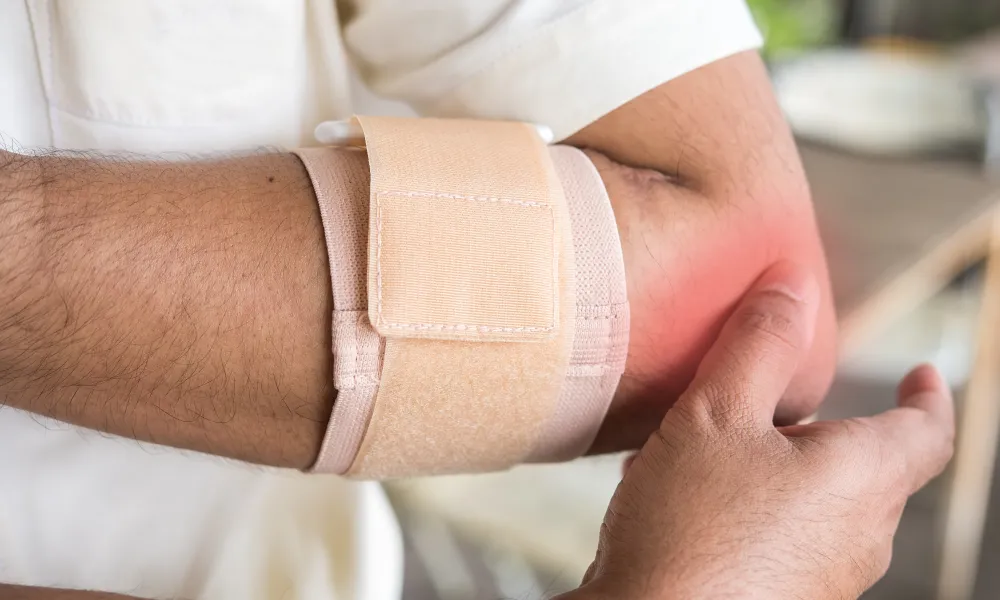
Tennis Elbow: Racquet Not Required
You can experience the soreness of tennis elbow, or lateral epicondylitis, even if you don't play tennis.
Tennis Elbow
You can experience the soreness of tennis elbow, or lateral epicondylitis, even if you don't play tennis.
This common condition is caused by frequent, twisting motion using the hand, wrist or forearm - like when playing tennis. Even though tennis elbow is common among those who play racquet sports it is more often the result of other repetitive motion, like gardening or using a computer.
Burning pain associated with tennis elbow is felt in the tendons attached to the outer bone, or lateral epicondyle, of the elbow. Repetitive motion causes the tendons to constrict and become irritated.

Tendons are fibrous bands connecting muscle to bone, and several muscles attach to the lateral epicondyle in the elbow. Two forearm muscles connected to the lateral epicondyle are the anoconeus and supinator muscles. These muscles respond when you rotate or twist your arm, similar to the action required to use a screwdriver.
Extensor muscles also connect to the elbow and are responsible for extending the fingers and wrists toward the back of your hand. For example, when typing at a computer your fingers extend causing your wrists to push inward toward the keyboard. Correctly adjusting your keyboard, desk and chair may help alleviate pain caused by the repetitive motion of using a computer. For more information about correctly setting up your work space, click here.
At first, the pain of tennis elbow is mild and worsens over time and may spread to the forearm. In severe cases, picking up simple objects or simply moving the elbow joint can be extremely painful.
An orthopedic physician's treatment plan for tennis elbow typically includes resting the arm, ice and anti-inflammatory medication like ibuprofen. This simple treatment usually improves the pain associated with tennis elbow in about four weeks.
If the pain persists, steroidal injections, a splint or brace may be prescribed. Once the pain is relieved, treatment may continue with physical therapy. This would include exercises for stretching and strengthening the muscles and tendons.
In rare cases, surgery may be required to remove damaged tendon and reattach healthy tendon to the bone.
Orthopedics is the area of medicine specializing in the diagnosis and treatment of bone, joint, tissue and nerve disorders, including those in the hand, wrist and arm. If you are living with elbow pain, call Proliance Orthopedic Associates at 425-656-5060.



